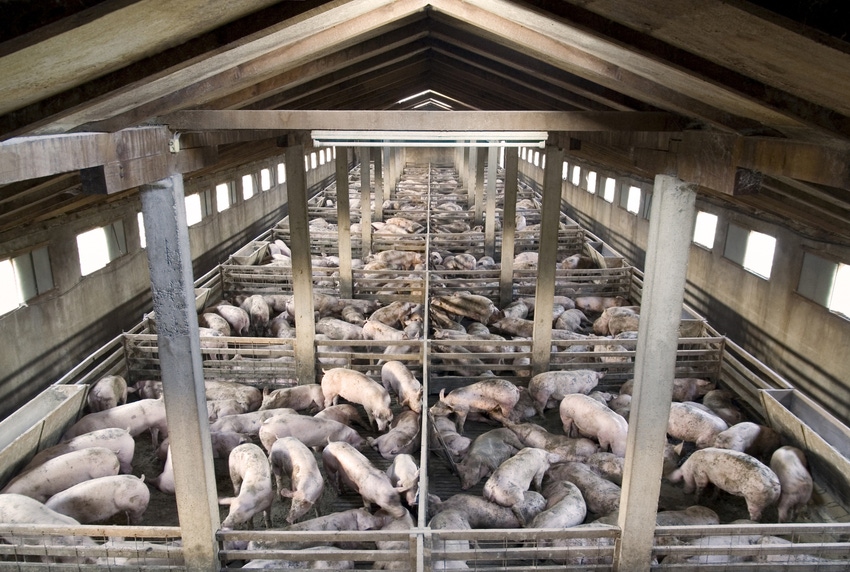Swine industry has changed since original assumptions factoring into surveillance system designs were made.
January 8, 2020

In a recently completed study funded by the Swine Health Information Center (SHIC), contemporary emerging and foreign animal disease (FAD) surveillance practices were examined, according to information posted by SHIC executive director Dr. Paul Sundberg on the American Association of Swine Veterinarians website.
Sundberg said study author Dr. Jeff Zimmerman of Iowa State University pointed to the dramatic change the domestic pork production industry has experienced over just a few years, with much larger herds and populations in regional areas. "Bigger herds have much more traffic, including trucks, people, feed and movement of pigs between sites," Zimmerman said. "That increases the likelihood and speed of disease transmission."
The executive summary for the study, "Development of Regional Surveillance Systems for Emerging & Foreign Animal Diseases of Swine," states: "Effective surveillance should efficiently collect data for production and/or business planning, document freedom from specific pathogens and guide a rapid, effective response to emerging and/or FADs. Current on-farm or regional surveillance programs routinely fail to meet these targets. In part, this is because the industry has changed over time and no longer conforms to the assumptions under which our surveillance systems were originally designed. As a result, surveillance either is not done or is done ineffectively."
Ineffectiveness of current surveillance practices was confirmed with the outbreak of porcine epidemic diarrhea virus when the disease progressed at a pace far faster than confirmed diagnosis, the post noted, adding that syndromic surveillance delayed detection of foot and mouth disease in Europe and classical swine fever in Europe and South America. In the past, random sampling was the standard; however, Zimmerman pointed out that this assumes that the disease is also random, which the industry recognizes as not being the case.
According to SHIC, in the course of the study, the researchers compared five methods for surveillance. Their work determined that spatially balanced surveillance evaluating diagnostic submissions could provide the efficient system being sought. "Veterinary diagnostic labs have massive [numbers of] samples coming in on a routine basis," Zimmerman said. These samples reflect the reality of current production practices with continuous flows of pigs.
"Spatially balanced surveillance detected pathogens earlier at lower prevalence," Zimmerman said. "This process is more likely to detect a pathogen than simple random sampling." Other advantages are having the samples on hand at diagnostic labs and providing for continuous surveillance efforts. "If there are concerns over African swine fever or other pathogens, this system could be implemented at a pretty low cost."
Work so far has focused on submissions to the Iowa State University Veterinary Diagnostic Laboratory. Zimmerman said he sees the next steps as expanding to include other labs as well as working with U.S. Department of Agriculture partners.
Funded by America's pork producers to protect and enhance the health of the U.S. swine herd, SHIC focuses its efforts on prevention, preparedness and response. As a conduit of information and research, SHIC encourages the sharing of its publications and research for the benefit of swine health. SHIC materials are free to forward, reprint and quote.
You May Also Like


.png?width=300&auto=webp&quality=80&disable=upscale)
